Features
It was just one year ago that Rabbi Matthew Leibl entertained a Rady JCC audience with “Oy to the World!”
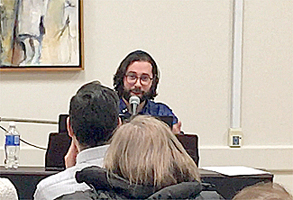
This article first appeared in the Dec. 23, 2019 issue of The Jewish Post & News. It’s hard to believe, but it was only a year ago that Rabbi Matthew Leibl entertained a packed room of mostly seniors in the Adult Lounge of the Asper Campus with a medley of famous xmas songs – all written by Jewish composers.
By BERNIE BELLAN
Rabbi Matthew Leibl is not your usual rabbi – but he sure can command a room.
With all his considerable talents – as a clever and always witty speaker, as a terrific keyboardist and pleasant singer, and with a range of interests from that go anywhere from Jewish scholarship to sports, Rabbi Matthew can both entertain – and educate, often simultaneously.
It came as no surprise, therefore, that on Tuesday, December 10, 2019, the adult lounge of the Asper Campus was packed – entirely with older adults mind you, who were there to hear Rabbi Matthew give a presentation that was titled “Oy to the World: The Jewish Contribution to Christmas”. (The name of the event itself was a pretty good clue that this was not going to be your typical “drash”.)
It turns out that Rabbi Matthew did do his research for what was to follow. He unveiled a seamless narrative, mixing well-known Christmas songs with stories about their composers, combining everything into a narrative that demonstrated how so many Jews have influenced our modern attitudes to Christmas.
Of course, nothing that Rabbi Matthew does is predictable, so when he greeted the audience with the first few lines of “It’s beginning to look a lot like Christmas”, I would dare say that most of us there were expecting him to reveal that well-known song was written by a Jew.
Aha – gotcha! It was written by Meredith Wilson – most famous undoubtedly for having written “The Music Man” – or, as Rabbi Matthew announced to the audience: “not a Jew”.
The tone was set, therefore, for what would turn out to be an evening of surprises, in which Rabbi Matthew would sing a well-known Christmas song, and then follow the song with what was almost always an unexpected story, either about how the song was written, or about how it came to be universally popular (often when the composer himself thought it would be a flop).
But first, Rabbi Matthew told another funny story about how, as a child, he misinterpreted the name of a well-known Christmas carol: “Hark, the Herald Angels Sing”. To his mind, Rabbi Matthew said, he thought it was a song about his “Zaida Harold” (the late Harold Pollock) – “Hark, the ‘Harold” Angels Sing”.
At that point, Rabbi Matthew launched into playing – and singing, words to a song that just didn’t seem familiar. Here’s what he sang:
The sun is shining, the grass is green
The orange and palm trees sway
There’s never been such a day
In Beverly Hills, L.A
But it’s December the twenty-fourth
And I am longing to be up North
Can you guess that those are the words in the introduction to “I’m Dreaming of a White Christmas”? As Rabbi Matthew explained it, however, we never actually hear the introduction to the song on any of its many recordings – and the image that introduction evokes is hardly one of a “white Christmas”. In fact, time and time again, as we were to learn, songs that have come to conjure up images of snow-lined streets, fireplaces blazing, and other such stereotypical Christmas images, were actually composed in Los Angeles – often during heat waves when various composers were all trying to cool themselves off by imagining cold winter scenes!
In any event, “White Christmas” was composed by Irving Berlin – born Israel Isidore Beilin in 1888 in Russia. A prodigy at an early age, Berlin’s first big hit was “Alexander’s Ragtime Band”. Berlin is considered one of the greatest American songwriters of all time. With so many hits to his name, it’s hard to realize they were all written by the same person. For instance, Berlin also wrote “God Bless America” (in 1938), which was a way for him to show his appreciation for the country that had taken in his family.
“White Christmas”, as Rabbi Matthew told the audience, was originally written in 1940 for the movie, “Holiday Inn”, which wasn’t released until 1942. (The introduction was scrapped when it was sung in the movie.)
The song, however, sung by Bing Crosby, was first played on the radio on Christmas day, 1941. It became an immediate sensation – and the Bing Crosby version went on to sell over 50 million copies, making it the best-selling Christmas single of all time. (Altogether, various different recordings of the song have sold over 100 million copies.)
Not only is “White Christmas” a song that tugged at the heartstrings at a time when America had just been plunged into what would become the second most costly war (in terms of lives lost) after the American Civil War, as Rabbi Matthew explained, it also set two other precedents: It was the first commercial success for a Christmas song and it was the first-ever secular Christmas song.
The song also set the pattern for future composers to follow, in terms of its beat which, as Rabbi Matthew noted, was “A,A,B,A”. “The time repeats, but the words change,” Rabbi Matthew explained.
Having begun with what is undoubtedly the most successful Christmas song of all time, Rabbi Matthew then took a step back in time to play another song that wasn’t really a Christmas song in the sense that it doesn’t mention the name “Christmas” at all, but nonetheless has come to be associated with the Christmas season: “Walking in a Winter Wonderland”, music by Felix Bernard, and written in 1934.
“The words to the song are terrible,” Rabbi Matthew suggested. He gave as an example these lines:
“He’ll say ‘are you married?’, we’ll say ‘no, man’‘
But you can do the job when you’re in town’ “
Moving back to the 1940s again – which turned out to be a most productive decade when it came to composing great Christmas songs, Rabbi Matthew sang “I’ll be home for Christmas”, released in 1943, music by Walter Kent (a.k.a. Walter Kaufman). The song was also first recorded by Bing Crosby.
As with “White Christmas”, this song captured the mood of America, with its famous final line “I’ll be home, if only in my dreams.” At the time, while America was fully at war with Japan in the Pacific, hundreds of thousands of American soldiers were also in England preparing for what would turn out to be D-day the next year.
As it was, there was also quite a bit of controversy attached to “I’ll be home for Christmas”, as another composer, by the name of “Buck Ram” (whose name I can’t help but think would be great for a male porn star), claimed he had met Walter Kent and lyricist Kim Gannon at a bar, where he had given them a copy of the song. His name was eventually added to the record label as a co-writer and he received royalties.
The next song on Rabbi Leibl’s list was “Chestnuts Roasting on an Open Fire” (or as it is actually titled, “The Christmas Song”), music by Mel Tormé (whose name was really Tormé!). As I noted at the beginning of this article, this was one of those songs written in L.A. during a torrid summer heat wave.
Rabbi Leibl quoted Mel Tormé as having said this about his song: “It was not one of my favourites, but it was my annuity!” The song is also noteworthy for being the first song ever to drop the name “Santa Claus” into it. (Boy, you have to wonder what Christmas would be like if so many Jews hadn’t fashioned its modern-day image.)
Keeping with the theme of heat waves, the next song was also written in the same 1945 heat wave that engulfed Los Angeles: “Let it Snow”, lyrics by Sammy Cahn, music by Jule Styne.
Here are some comments made by Rabbi Leibl about the song: They (the composers) were trying to think cool thoughts…there’s no mention of Christmas…the song appears at the end of “Die Hard” – one of the two greatest Christmas movies ever made (the other being “Home Alone”). You can kind of get a sense of the era in which Rabbi Leibl grew up by his loving references to the 1980s.
As with every other song he played during the evening, the next one was accompanied by a very amusing anecdote.
The song was “City Sidewalks, Silver Bells” – written in 1951 by Jay Livingston (
born Jay Levison) (music) and Ray Evans (lyrics) – both Jewish. The duo also went on to write “Que Sera Sera” – which is probably the first song I myself ever remember from a movie.
“Silver Bells” was originally called “Tinkle Bells”, Rabbi Matthew explained, but when Jay Livingston went home to his wife and told her that he and Evans had composed a song called “Tinkle Bells”, her reactions was: “Are you crazy? Do you know what ‘tinkle’ means?” (Actually, a reference to Wikipedia expands upon Rabbi Matthew’s story. Apparently, Jay Livingston didn’t know what his wife was talking about: “Of course, Jay and Ray had never heard it used in that way. ‘Tinkle’ (for ‘pee’) is a woman’s term. As Jay said in the act that they used to do, ‘When I was a boy, I said “Pee-pee”. Come to think of it, I STILL say “Pee-pee’”, only more frequently’.”
In any event, the song title was changed to “Silver Bells” – and although it was first sung by William Frawley (who went on to play Fred Mertz in “I Love Lucy”), it was made famous when it was recorded by Bing Crosby in 1950.
Forward to 1962 – and the Cuban Missile Crisis. (Where’s this going, you’re probably wondering?) Rabbi Leibl told a story about someone named Gloria Shayne who, when she was growing up, happened to live next door to a family by the name of Kennedy (as Gerry Posner would say, “as in John Fitzgerald Kennedy’ ”).
Gloria Shayne and her then-husband, Noël Regney, wrote the song, “Do You Hear What I Hear?” as a plea for peace. Something else that set this song apart from every other song Rabbi Leibl sang that evening, as he noted, was that it was the only one that mentioned the name “Christ”.
Many of you reading this might remember the “Andy Williams Show”, which was popular in the 1960s. But, did you know that the song “It’s the most Wonderful Time of the Year” was written for that show? It was written in 1963 by Sydney Pola (born Sidney Edward Pollacsek) and George Wyle (born Bernard Weissman, also famous for composing the theme song to “Gilligan’s Island”, a very important show for Rabbi Leibl’s parents’ generation). By the way, although I was taking copious notes during this very important lecture, I have had to resort to Googling a good portion of the information you’re reading here. I can’t imagine how much work Rabbi Matthew put into putting together his song list. He really should do his show again; I’m sure it would attract an even bigger audience next year.
Next, we were told we’re going to hear songs by “the greatest Christmas composer of all time!” But, what about all the songs we just heard? Who could top some of those songwriters?
It turned out that it was Johnny Marks. Here’s an excerpt from Wikipedia: John David Marks (November 10, 1909 – September 3, 1985) was an American songwriter. Although he was Jewish, he specialized in Christmas songs and wrote many holiday standards, including “Rudolph, the Red-Nosed Reindeer” (a hit for Gene Autry and others), “Rockin’ Around the Christmas Tree” (a hit for Brenda Lee), “A Holly Jolly Christmas” (recorded by the Quinto Sisters and later by Burl Ives)” and even more.
While Rabbi Leibl told one story after another about each of the above songs, he really outdid himself when he told the story how “Rudolph the Red-Nosed Reindeer” came into being. The story goes that Marx’s sister was married to a guy by the name of Robert Ray.
Ray was working for the department store Montgomery Ward, working as a low-level copywriter. Although Rabbi Leibl described what happened in great detail, it’s such a beautiful story that I thought I’d quote extensively from the Wikipedia article describing how the song came into being:
Sometime in the 1930s, May moved to Chicago and took a job as a low-paid in-house advertising copywriter for Montgomery Ward. In early 1939, May’s boss at Montgomery Ward asked him to write a “cheery” Christmas book for shoppers and suggested that an animal be the star of the book. Montgomery Ward had been buying and giving away coloring books for Christmas every year and it was decided that creating their own book would save money and be a nice good-will gesture.
May’s wife, Evelyn, had contracted cancer in 1937 and was quite ill as he started on the book in early 1939. May “drew on memories of his own painfully shy childhood when creating his Rudolph stories.” He decided on making a reindeer the central character of the book because his then four-year-old daughter, Barbara, loved the deer in the Chicago zoo. He ran verses and chapters of the Rudolph poem by Barbara to make sure they entertained children. The final version of the poem was first read to Barbara and his wife’s parents…
In 1948, May’s brother-in-law, Johnny Marks, wrote (words and music) an adaptation of Rudolph. Though the song was turned down by such popular vocalists as Bing Crosby and Dinah Shore, it was recorded by the singing cowboy Gene Autry. “Rudolph the Red-Nosed Reindeer” was released in 1949 and became a phenomenal success, selling more records than any other Christmas song, with the exception of “White Christmas”.
And with that, the entire audience joined in the singing of “Rudolph the Red-Nosed Reindeer.” All that was needed to cap off the evening was for everyone to adjourn to The Shanghai (which, alas, is no longer) – and which, Rabbi Leibl recalled, was where his family always used to go for Christmas.
Next on the list of off-beat stories for this paper: A scholarly dissertation on David Steinberg’s famous line that almost got him thrown off the Smothers Brothers Show for good: “Let’s put the ‘Ch’ back into Chanukah – and the ‘Christ’ back into Christmas.”
You can watch a compilation of Rabbi Matthew singing popular xmas songs here: https://www.youtube.com/watch?v=bWyZ1djqxaI
Features
Japanese Straightening/Hair Rebonding at SETS on Corydon

Japanese Straightening is a hair straightening process invented in Japan that has swept America.

Features
History of the Winnipeg Beach Synagogue: 1950-2025
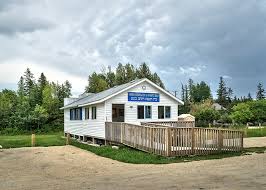
By BERNIE BELLAN The history of the Winnipeg Beach Synagogue is a fascinating one. We have had several articles over the years about the synagogue in The Jewish Post & News.

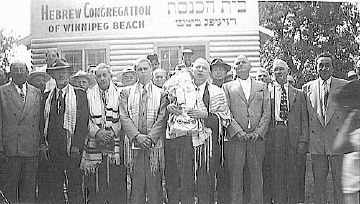
In June 2010 I wrote an article for The Jewish Post & News upon the 60th anniversary of the synagogue’s opening. Here are the opening paragraphs from that article:
“Sixty years ago a group of Winnipeg Beach vacationers decided that what their vacation area lacked was a synagogue. As it happened, a log cabin one-room schoolhouse in the Beausejour area happened to be available.
“In due course, the log cabin was relocated to the corner of Hazel and Grove in Winnipeg Beach, where it stayed for 48 years.”
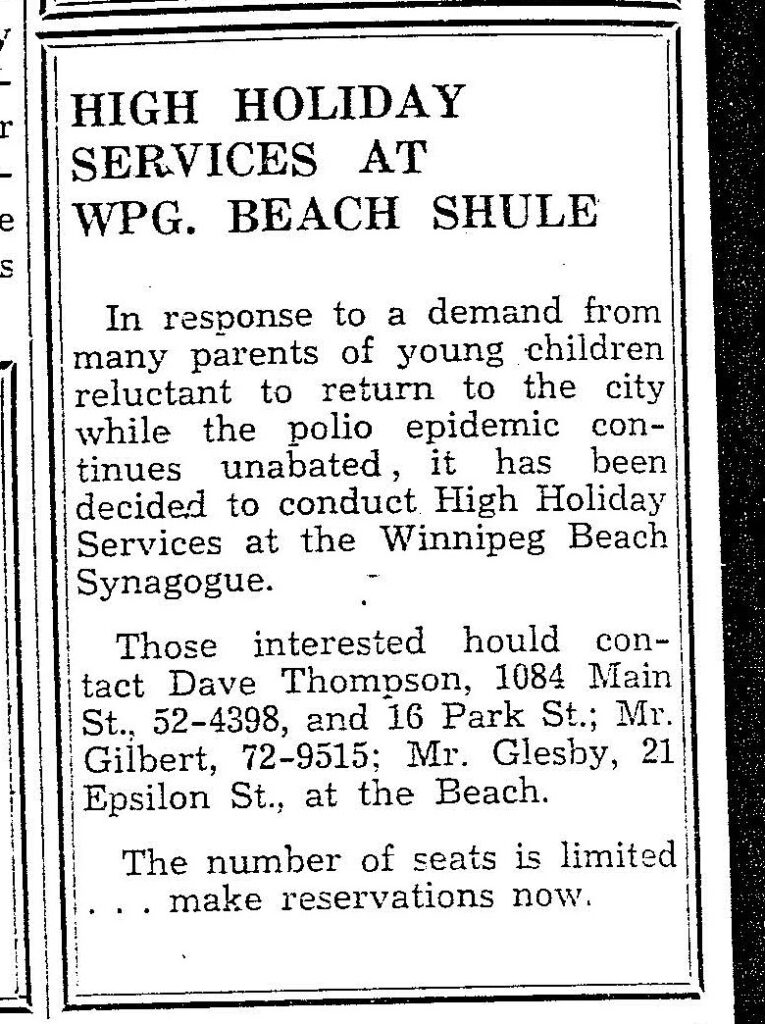
In December 1994 my late brother, Matt, wrote a story about the spraying of antisemitic grafitti on the synagogue which, at that time, was still situated at its original location on the corner of Hazel and Grove in the town of Winnipeg Beach:
“Two 16-year-olds spraypainted slogans like ‘Die Jews,’ ‘I’ll kill you Jews,’ and other grafitti in big letters on the beach synagogue.
“Jim Mosher, a news reporter for the Interlake Spectator in Gimli, said last Halloween’s vandalism against the synagogue wasn’t the first. In the late 1980s, he claimed, it was spraypainted with swastikas.
“Jack Markson, a longtime member of the Winnipeg Beach Synagogue, last week also said he could remember finding anti-Semitic grafitti spraypainted on the synagogue ‘a few years ago,’ and at least twice in the 1970s, when the cottage season was over.”

My 2010 article continued: “In 1998 the Town of Winnipeg Beach informed the members of the synagogue that the building would have to be hooked up to the town’s sewer and water system. Rather than incur the cost of $3-4,000, which was thought to be ‘prohibitive,’ according to longtime beach synagogue attendee Laurie Mainster, synagogue goers looked elsewhere for a solution.
“As a result, the board of Camp Massad was approached and asked whether the synagogue might be relocated there, with the understanding that the synagogue would be made available to the camp at any time other than what were then Friday evening and Saturday morning services.
“Over the years the ‘beach synagogue’ had come to be a very popular meeting place for summertime residents of Winnipeg Beach and Gimli. In fact, for years minyans were held twice daily, in addition to regular Saturday morning services. Of course, in those years Winnipeg Beach was also home to a kosher butcher shop.
“While the little synagogue, which measured only 18 x 24 feet, has gone through several transformations, including the move to Camp Massad, and the opening up to egalitarian services in 2007 (The move to egalitarian services was as much a practical necessity as it was a nod to the equality of women – the only Kohen present at the time was a woman!), it has always remained cramped at the best of times.
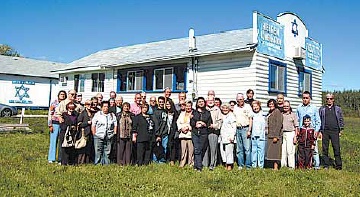
“In recent years the synagogue has seen the addition of a window airconditioner (although to benefit from it, you really have to be sitting just a few feet away), as well as a fridge that allows synagogue attendees to enjoy a regular Saturday morning Kiddush meal following the service.
“According to Laurie Mainster, the Saturday morning service has continued to be popular, even though many of the attendees now drive in from Winnipeg, as they have sold the cottages they once maintained.
“On the other hand, one of the side benefits to being located on Camp Massad’s grounds has been an infusion of young blood from among the camp counsellors.
“Since there is no longer a rabbi available to conduct services (Rabbi Weizman did lead services for years while he had a cottage at the beach), those in attendance now take turns leading the services themselves.
“Anyone may attend services and, while there are no dues collected, donations are welcome. (Donations should be made to the Jewish Foundation of Manitoba, with donors asked to specify that their donations are to be directed to the beach synagogue.)
“Mainster also says that the beach synagogue is now undergoing an expansion, which will be its first in 60 years. An entirely new space measuring 16 x 18 feet is being added – one that will allow for a real Kiddush area. (Until now, a table has been set up in the back of the synagogue and synagogue goers would help themselves to the buffet that is set up each Saturday during the summer. While pleasant enough, it will certainly be more comfortable to have an actual area set aside for the Saturday afternoon after service lunch.)
“As for dress, longtime attendee Abe Borzykowski (in an article written by Sharon Chisvin for the Free Press in 2007) remarked that ‘I don’t think there are many synagogues where people can attend in shorts, T-shirts and sandals and not feel out of place.’ “

As mentioned in that 2010 article, the beach synagogue at that time was about to undergo an extensive remodelling. Here is an article from a January 2011 issue that describes that remodelling process. The article was written by Bernie Sucharov, who has been a longtime member of the beach synagogue:
“The Hebrew Congregation of Winnipeg Beach made a major change to the synagogue this past summer. With the help of many volunteers, Joel Margolese being the project manager, the synagogue was expanded and an addition was built to handle the overflow crowds, as well as to add more space for the kiddush following services.
“The volunteers spent many Sundays during the summer months building the addition. Bad weather caused many delays, but finally the addition was completed one week before the official summer opening.
“The volunteers were: Joel Margolese, Gordon Steindel, Sheldon Koslovsky, Viktor Lewin, Harvey Zabenskie, Nestor Wowryk, Kevin Wowryk, Victor Spigelman, Jerry Pritchard, and David Bloomfield.
“On Sunday, June 25, 2010 a special ceremony was held to affix a mezzuzah to the front entrance door. Gordon Steindel had the honour of affixing the mezzuzah, which was donated by Sid Bercovich and Clarice Silver.
“Refreshments and food for the day were prepared by Phyllis Spigelman, also known as our catering manager. Throughout the summer, Phyllis, Lenore Kagan and other friends prepared the food for our kiddush.
“A sound system was donated by Arch and Brenda Honigman in memory of their father, Sam Honigman z”l. “The system was installed by Joel Margolese and Stevan Sucharov. This will allow the overflow crowd to hear the service in the new addition.
“There were also generous donations of 50 chumashim and an air conditioner. The chumashim were donated by Gwen, Sheldon and Mark Koslovsky. The air conditioner in the new addition was donated by Joel and Linda Margolese.
“The official opening of the synagogue for the summer took place on July 3, 2010. We had an overflow crowd of 70+ people.”
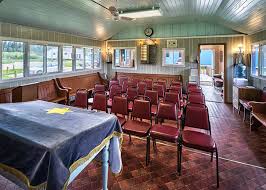
Since that 2010 major addition to the synagogue, it has also added a wheelchair ramp (although I’ve been unable to ascertain exactly when the ramp was built). Also, the synagogue also has its own outdoor privy now. (Attendees used to have to use facilities in Camp Massad.)
And, as already noted in article previously posted to this site (and which you can read at Beach Synagogue about to celebrate 75th anniversary), in recognition of that occasion, on August 2nd members of the synagogue will be holding a 75th anniversary celebration.
As part of the celebration anyone who is a descendant or relative of any of the original members of the first executive committee is invited to attend the synagogue that morning.
If you are a relative please contact Abe Borzykowski at wpgbeachshule@shaw.ca or aborzykowski@shaw.ca to let Abe know you might be attending.
Features
Kinzey Posen: CBC Winnipeg’s former “go-to guy”

By GERRY POSNER If former Winnipegger Lawrence Wall was the CBC go-to guy in Ottawa, CBC Winnipeg had its own version of a go-to guy for many years with none other than the very well known Kinzey Posen. Of course, many readers will recognize that name from his career with Finjan, the Klezmer group so famous across Canada and beyond. It has been written about Posen and his wife Shayla Fink that they have been involved in music since they got out of diapers. And, as an aside, their love and ability in music has now been transmitted to the next generation as in their son, Ariel Posen (but that’s another story).
Kinzey Posen (not to be confused with Posner, or maybe we are to be confused, but who knows for sure?), was a graduate of Peretz School, having attended there from nursery right until Grade 7, graduating in1966. That was followed by Edmund Partridge and West Kildonan Collegiate. Musically, he was in large part self taught. However, he did have some teachers along the way. After moving to Vancouver – from 1974-78, he had the chance to study acoustic classical bass with a member of the Vancouver Symphony Orchestra. When Kinzey lived in Vancouver, he also worked as a jazz musician.
Upon returning to Winnipeg, Kinzey enrolled as a mature student at the University of Winnipeg, where he obtained a Bachelor of Urban Studies degree. Although the degree was in no way connected to the career that followed, his attending the University of Winnipeg was critical to his connecting with the CBC. Why? you ask. Kinzey had a position after graduation working for the Institute of Urban Studies. While there, he met someone who invited him to work for the Department of Continuing Education as one of their program directors. At the time the Department of Continuing Education was located at 491 Portage Avenue, which was also known as the TJ Rice Building. The CBC also leased some space in the same building. According to Kinzey, the CBC part of the building “included HR, different shows and other support offices. Continuing Education was located in the basement and main floor and that’s where I worked.”
KInzey had long had an interest in the CBC, which made the fact that the CBC had some offices in the same building where he was working serendipitous. That Kinzey might be interested in visiting the CBC was not an accident. As a young boy he had a nightly connection to CBC, as it was his ritual to listen to CBC Radio (as well as all sorts of other radio stations across the USA) on his transistor radio every night in bed. He became enamoured of one particular CBC host, Bill Guest, so that when going to sleep, he imagined that he was Guest doing interviews with imaginary guests. That dream of working for CBC became a reality when he had a chance to do a one week gig with Jack Farr’s network program.
Kinzey took a week off from his Continuing Education job and spent five days at the CBC. That week was a training session for Posen, as he had to create ideas, research, pre-interview, write the script, and set up the studio for Farr’s interview. He was almost in his dream job – although not quite – since it was only for one week. His opportunity, however, came in 1988, when he was offered a one-year term as a production assistant – the lowest guy on the ladder, for a show called “ Simply Folk,” with the late Mitch Podolak as the host. Although he was indeed at the bottom as far as those working on the show were concerned, he took a chance and gave his notice to the U of W. The rest is history. In his new job, Kinzey learned how to become a producer. Lucky for him, at the end of the year, when the person he replaced was supposed to come back, she never returned (just like the song, “MTA,” by the Kingston Trio). At that point, Kinzey was hired full time at the CBC.
Kinzey was a fixture at the CBC for 27 years. During those years, Kinzey had the chance to work with Ross Porter, a respected former CBC host and producer, also with Karen Sanders – on the “Afternoon Edition.” One aspect of Kinzey’s job on the Afternoon Edition was to come up with ideas, mix sound effects, arrange interviews and music, to create a two-hour radio experience. In addition, he covered jazz and folk festivals and, as a result, was exposed to some of the best musicians in the world. With Ross Porter in the 1990s, he worked on a network jazz show called “ After Hours,” which was on from 8-10 PM five nights a week. Kinzey was involved with writing the scripts, picking the music, and recording the shows, as well as editing them and then presenting them to the network for playback.
Of course, over his career, Kinzey had many memorable moments. He told me about one of them. The story revolved around the National Jazz Awards one year in particular. The awards were to be broadcasted after the National News which, in those days, began much earlier in the evening, and were over by 8:00 pm. The legendary Oscar Peterson was lined up to play a half hour set at the awards, starting at 7:30. But, as Kinzey told me, Oscar Peterson had a “hate on” for the CBC ecause one of his recorded performances was wrongly edited and he refused to appear on CBC under any circumstances. As the time neared 8:05 PM, which was when the CBC was to begin its broadcast of the jazz awards, it became apparent that Oscar was not going to finish on time. As the producer of the awards show, Kinzey was tasked with telling Oscar Peterson to wrap it up and get off the stage. There was Kinzey Posen, a huge fan of Oscar Peterson, now faced with the prospect of telling Oscar – while he was still playing – with 500 people in the audience, to stop and get off the stage. Not often was or is Kinzey Posen frozen, but that was one such moment. There was one loud “Baruch Hashem” from Kinzey when Oscar completed his set literally just in time.
Clearly, Kinzey was part of a very successful run with After Hours as it was on the air for 14 years. It was easily one of the most popular shows on CBC Radio 2, and a winner of several broadcasting awards. Kinzey also played a major role in producing a two part documentary about legendary guitarist Lenny Breau.
When After Hours ended, Posen became one of the contributing producers to Canada Live and specialized in producing live radio specials for the network, such as the Junos, for CBC Radio One and Two. Needless to say, his career planted Posen in the world of some top notch musicians, including his time spent working with Robert Plant (Led Zeppelin), Dave Brubeck, Randy Bachman, Chantal Kreviazuk and a list of prominent names in the Canadian, American and European music spheres. Locally, the CBC came to refer to Kinzey as the Jewish expert. I would add music expert to that title.
After his 27 year run at the CBC – and before he fully retired, Kinzey went on to work for the Rady JCC as a program director for a year and a half. Of course, to say that Kinzey Posen is retired is a major contradiction in terms. You really can’t keep him down and he has his hand in a variety of programs and projects – most of which he remains silent about, as is his style.
When I realized the full depth and talent of Kinzey Posen, I quickly concluded that he must certainly be related to me. Even if he isn’t, I now tell people he is.
